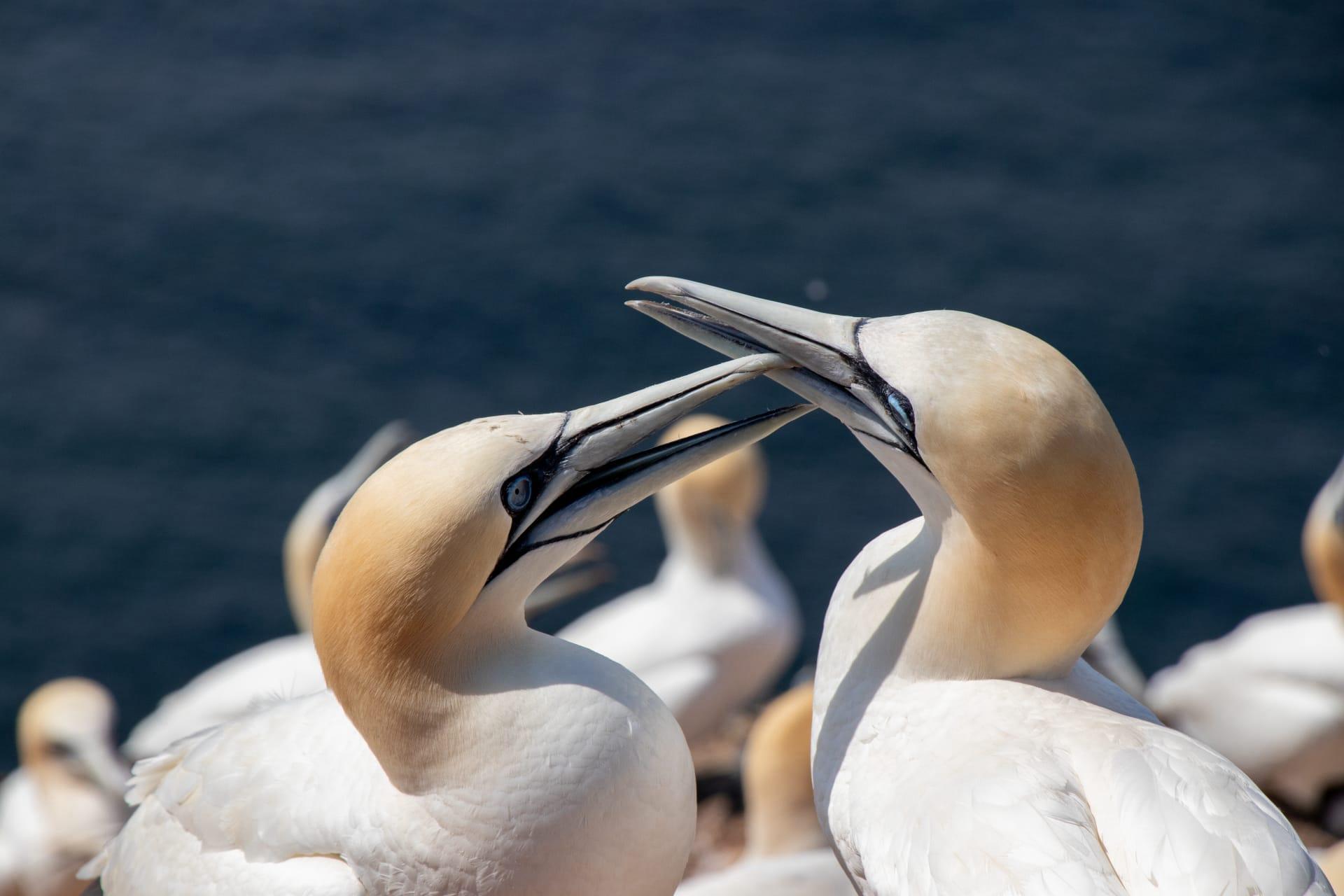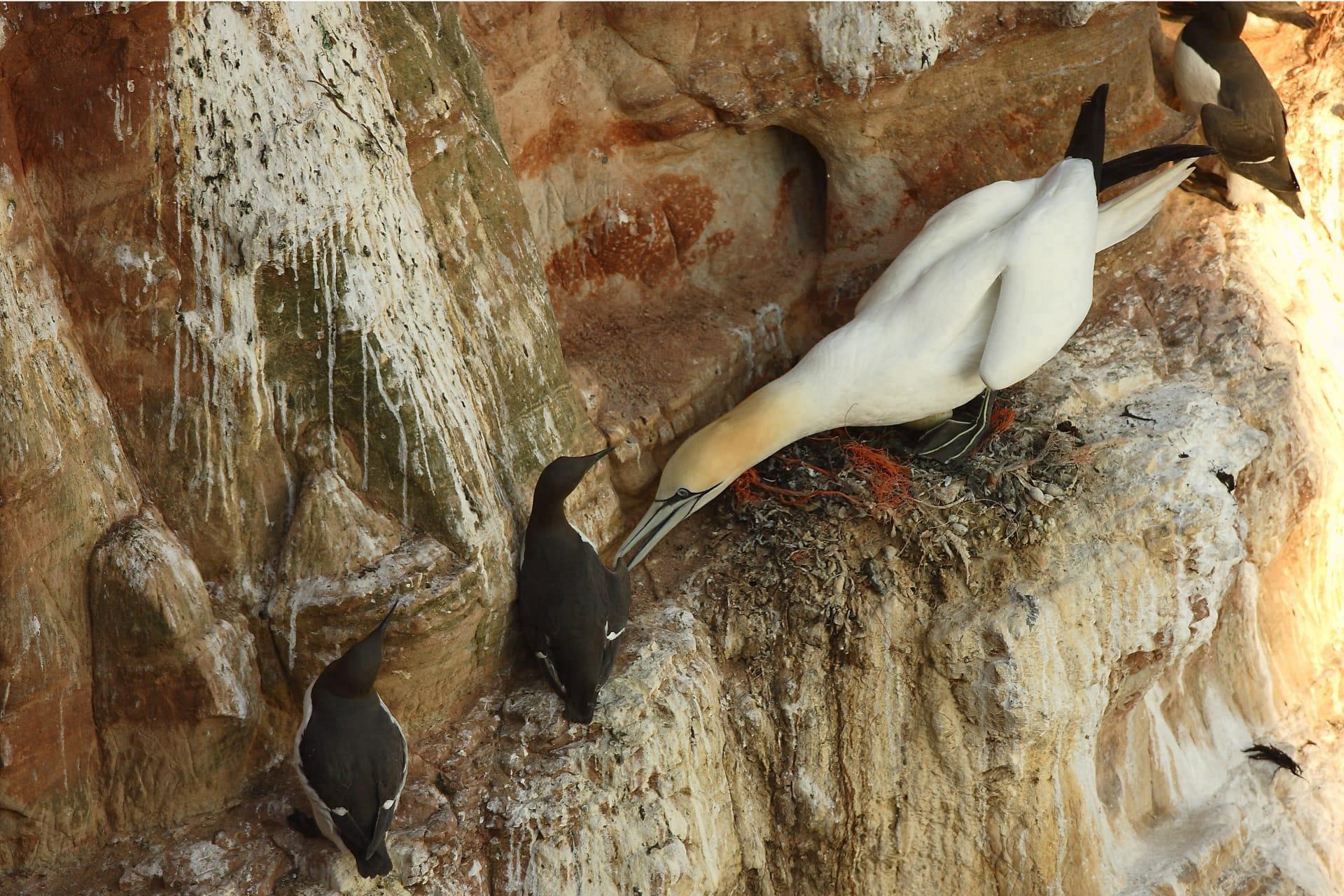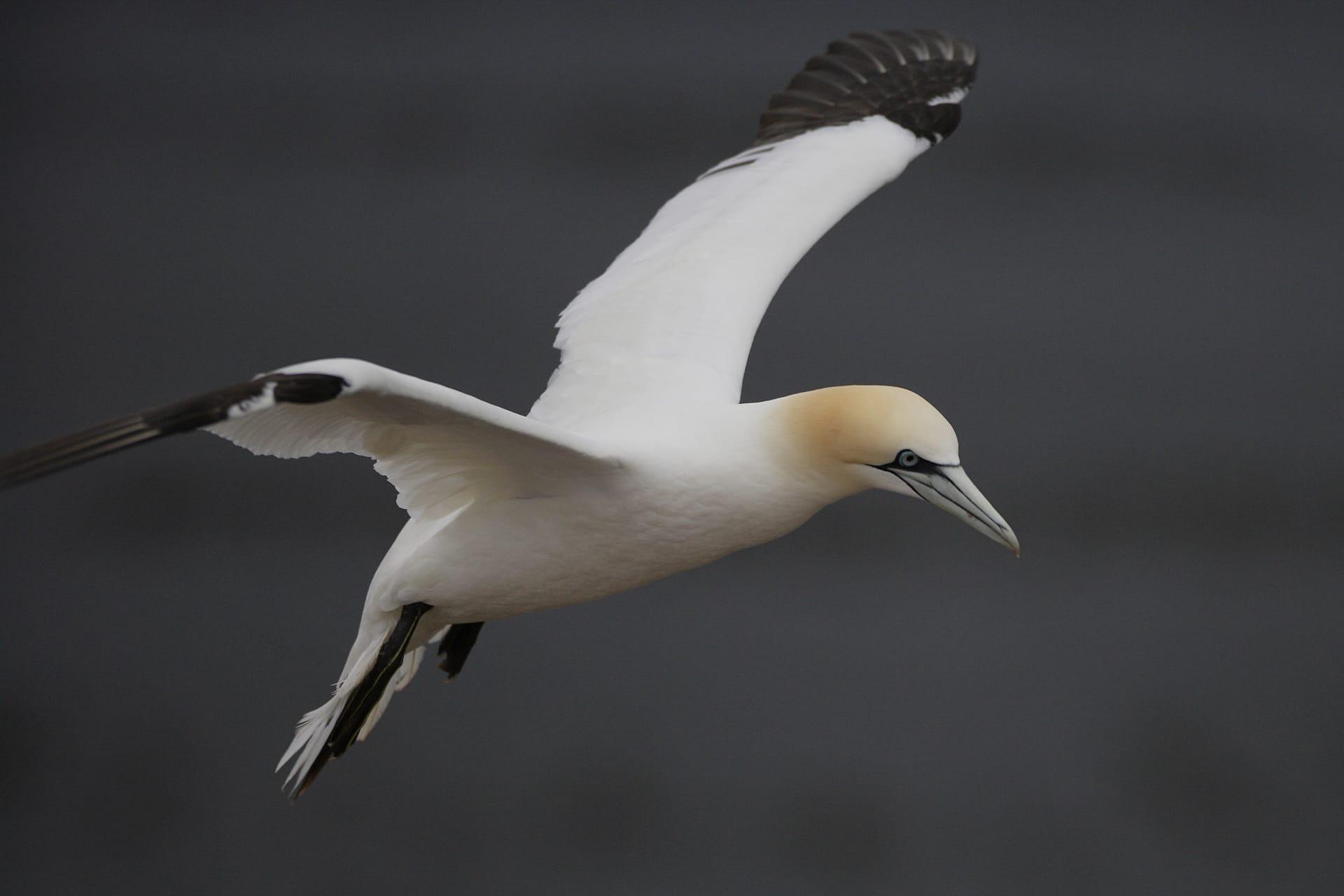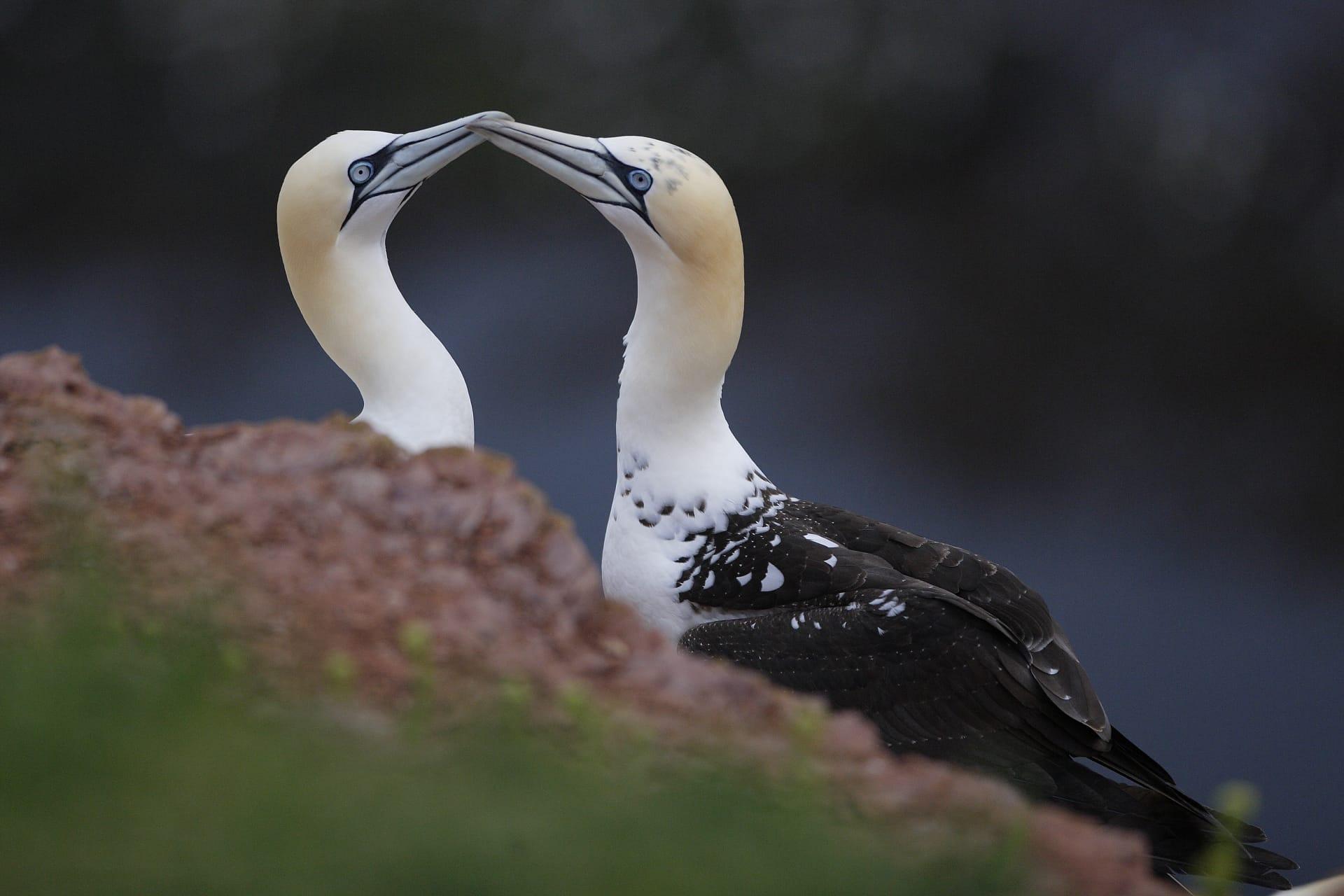1
Gannets are renowned for their incredible diving ability. When hunting fish, these birds can plunge from heights of up to 100 feet (30 meters) at speeds reaching 60 miles per hour (97 kilometers per hour). Their bodies are specially adapted for this high-impact diving. Gannets have air sacs in their face and chest, which act like built-in airbags, cushioning the impact with water. This adaptation allows them to chase fish deep underwater, sometimes diving to depths of 22 feet (6.7 meters) after hitting the surface.
Another fascinating aspect of Gannets is their migration behavior. While many bird species migrate, the Gannet's journey is particularly impressive. They are capable of traveling thousands of miles during migration. For instance, Northern Gannets from the colonies in the UK and Ireland often migrate to West Africa, covering a distance of over 1,800 miles (2,897 kilometers). During these migrations, Gannets rely on their exceptional navigational skills and are known to return to the same nesting sites year after year.

2
Gannets have a unique social structure, particularly when it comes to breeding. They are monogamous and often form long-lasting pair bonds. Some pairs have been known to stay together for several years. During the breeding season, Gannets engage in elaborate greeting rituals, which include actions like sky-pointing, mutual preening, and bill fencing, where they gently tap each other's bills. These rituals strengthen their bond and are vital for maintaining pair unity.
Their nesting habits are equally interesting. Gannets are colonial nesters, often forming large, densely packed colonies on cliffs and islands. Bass Rock in Scotland, for instance, hosts the world's largest single rock gannet colony, with over 150,000 breeding pairs. Their nests are made from seaweed and grass, glued together with their own guano (bird droppings). This makes the nests sturdy and water-resistant, essential for surviving in their often harsh and windy habitats.

3
When it comes to feeding, Gannets have a highly specialized diet, primarily consisting of fish. They possess exceptional eyesight, allowing them to spot fish from high altitudes before diving. Once they spot their prey, they streamline their bodies and dive like arrows into the water. An adult Gannet can eat up to 1 pound (450 grams) of fish per day, often targeting schooling fish like herring, mackerel, and sardines.
Gannets also have a unique way of communicating. They use a range of vocalizations and body language to communicate with each other, especially in their crowded colonies. Their calls include a variety of guttural sounds and harsh cries. During the breeding season, these sounds intensify as they communicate with their mates and ward off potential rivals. These vocalizations are crucial for individual recognition among thousands of birds in a colony.

4
The lifespan of a Gannet is another intriguing aspect. These birds can live for up to 20 years, but reaching maturity takes time. Gannets are not considered fully mature until they are about 5 years old, which is relatively long for birds. During this maturation phase, their plumage undergoes several changes. Juvenile Gannets are mostly brown, but as they age, they develop the distinctive white plumage with black wingtips and a pale blue-grey bill of adult Gannets.
Gannets have an extraordinary adaptation to help them survive in cold water environments. They have a counter-current heat exchange system in their legs. This system helps to minimize heat loss by transferring heat from the arteries to the veins in their legs, thus keeping their body temperature stable even in icy waters. This adaptation is crucial for Gannets, as they spend a significant amount of time hunting in the cold waters of the North Atlantic and other chilly marine environments.

5
Gannets play a significant role in their ecosystem as indicators of ocean health. Scientists study their feeding patterns and breeding success to gauge the health of marine environments. Changes in Gannet behavior or population can signal shifts in fish populations or ocean conditions, making them valuable for ecological research.
Gannets have an unusual method of drinking. Since they spend most of their life at sea, fresh water is scarce. Gannets obtain most of their water from the fish they eat. However, they are also capable of drinking seawater. They have specialized glands located near their eyes that filter out the salt, which is then excreted through their nostrils. This unique adaptation allows them to thrive in marine environments where fresh water is not readily available.